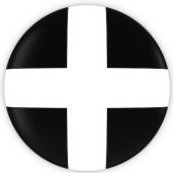Urgent Help - Think Local Mitsu Dealer Is Trying To Sell Me Old Discs
-
Recently Browsing 0 members
- No registered users viewing this page.
-
Topics
-
-
Popular Contributors
-
-
Latest posts...
-
2
Are you bitter about western women?
But before 28? I banged a 26 year old German bird on Phi Phi. She was about 18 stone but still 26. Mark. -
15
Crime Brazilian Man Arrested at Phuket Airport on Traffic Violation Warrant
Shouldn’t be posted without detail of actually why arrested. not a fine to leave but actually arrested . -
2
-
15
Oh Koh Phi Phi, What have you become?
By farangs and greed and the mafia. Mark. -
15
Oh Koh Phi Phi, What have you become?
All the farang islands have been ruined- 1
-

-
74
Analysis Thailand in Trouble: Expats Exit as Vietnam Steals the Show
I wanted to take just these two particular points because many of the others are largely subjective. That said, I broadly agree that Thailand stands out as a significantly better destination for foreigners compared to its neighbouring countries. However, healthcare remains a serious concern. First, there's the issue of dual pricing. At the lighter end of the scale, we see it in places like national parks - and while it's objectionable in principle, most people aren't too bothered. In the private sector, we have the freedom to take our business elsewhere. The real problem arises with state-sanctioned dual pricing in government hospitals. If we fall seriously ill, we're can be charged substantially more than a Thai citizen would be for the same treatment (i.e. long term cancer treatment and operations costing 2 Million Baht instead of 1 MB. In my view, this is indefensible. When it comes to healthcare, there should be an option for long-term residents to pay into the system and receive equitable care. For me, this is where dual pricing becomes genuinely troubling - it's the big stuff that matters. Secondly, while the quality of treatment is generally excellent, there's a troubling lack of accountability when mistakes are made - a factor that certainly helps keep costs down. Personally, I’d prefer to be in a private hospital in Bangkok over most places in the world. But the question is - at 80, will I still be able to afford the premiums? And that brings us full circle, back to the need for a system that ensures long-term, affordable care. I can’t say whether neighbouring countries offer anything better in this regard, but this remains a major red flag when considering a long-term life in Thailand, especially if one hopes to grow old in comfort with the security of health care.
-
-
Popular in The Pub








.thumb.jpeg.d2d19a66404642fd9ff62d6262fd153e.jpeg)

Recommended Posts
Create an account or sign in to comment
You need to be a member in order to leave a comment
Create an account
Sign up for a new account in our community. It's easy!
Register a new accountSign in
Already have an account? Sign in here.
Sign In Now